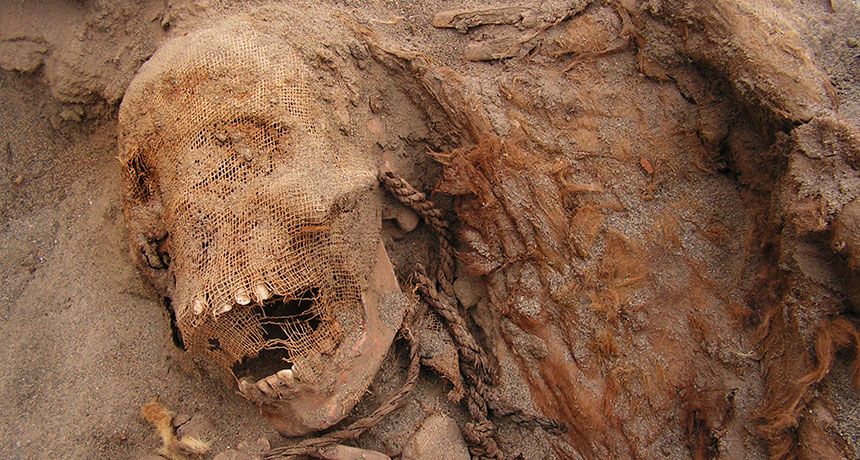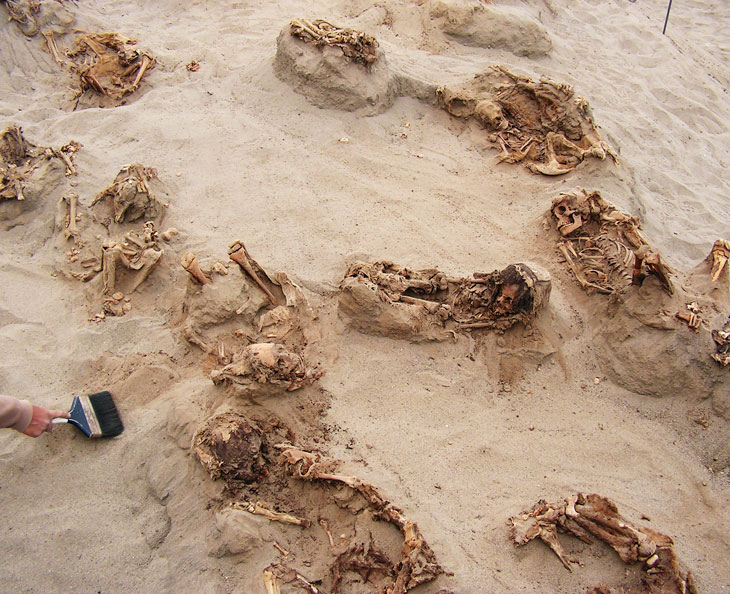Anthropologists in Peru have unearthed the largest known child sacrifice
550 years ago, the Chimu people may have killed 140 children to appease their gods

SACRIFICIAL STARE Discoveries at the site of the largest known mass sacrifice of children included this shroud-covered youngster lying next to a llama and a rope that was used to lead the llama. The Peruvian site dates to around 1450.








